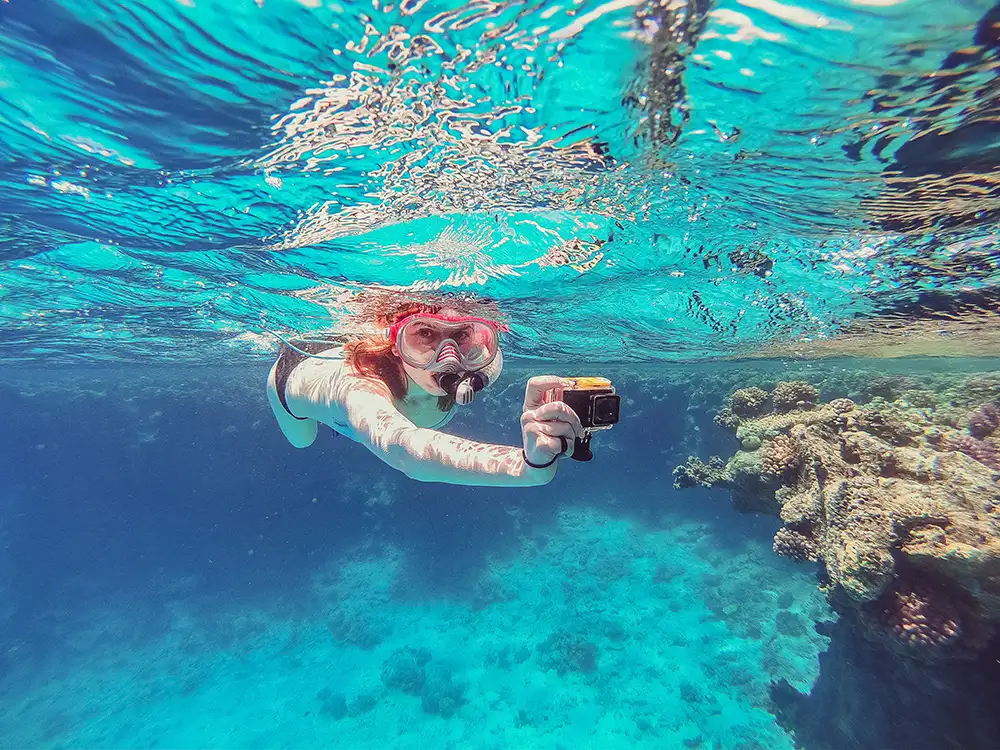
Welcome to our in-depth guide on underwater photography, where we will plunge into the fascinating world beneath the waves. Capturing the beauty of aquatic life and submerged landscapes requires skill, specialised equipment, and a deep understanding of the underwater environment.
Whether you’re an experienced photographer or a beginner, this guide will equip you with the knowledge and techniques needed to take breathtaking underwater photos.
Underwater photography presents unique challenges, including water clarity, light diffusion, and buoyancy control. Understanding these factors is crucial for successful underwater shots.
Investing in the right equipment is key to capturing stunning underwater images. We’ll discuss essential gear such as underwater housings, cameras, lenses, and lighting systems.
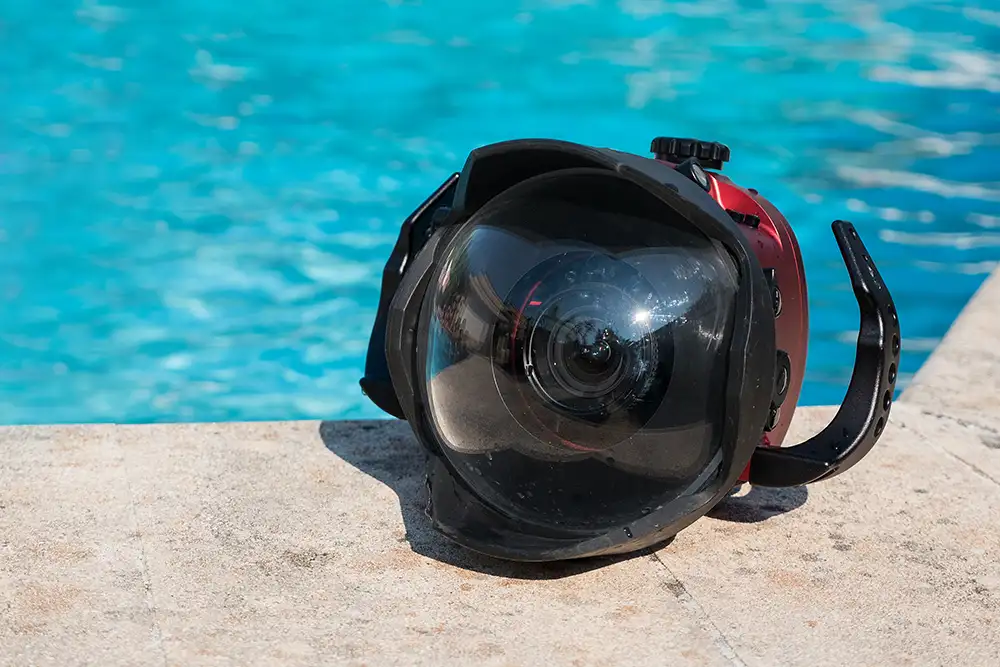
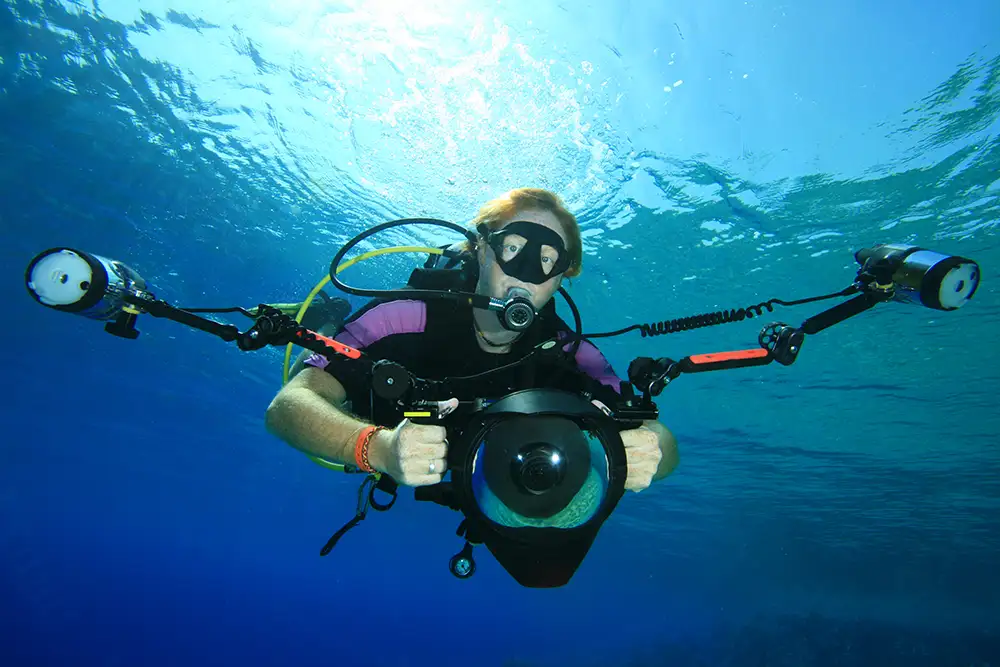
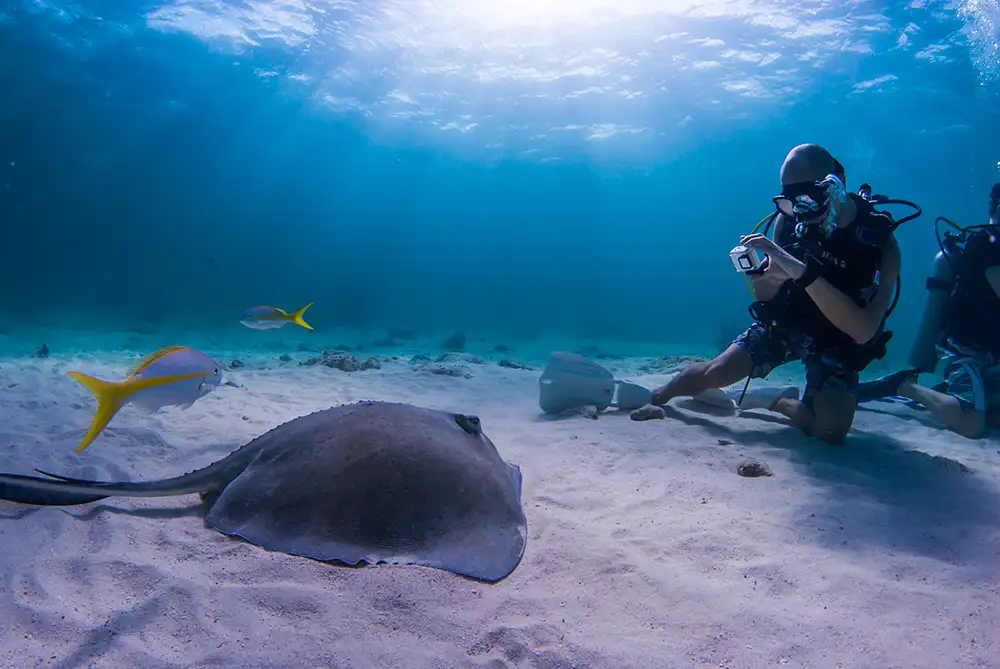
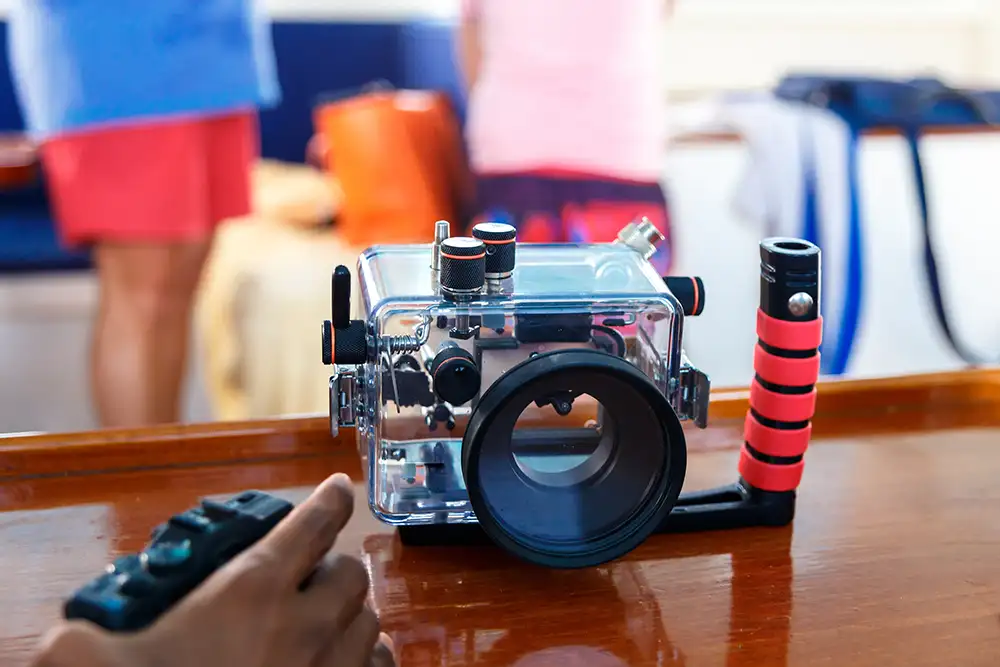
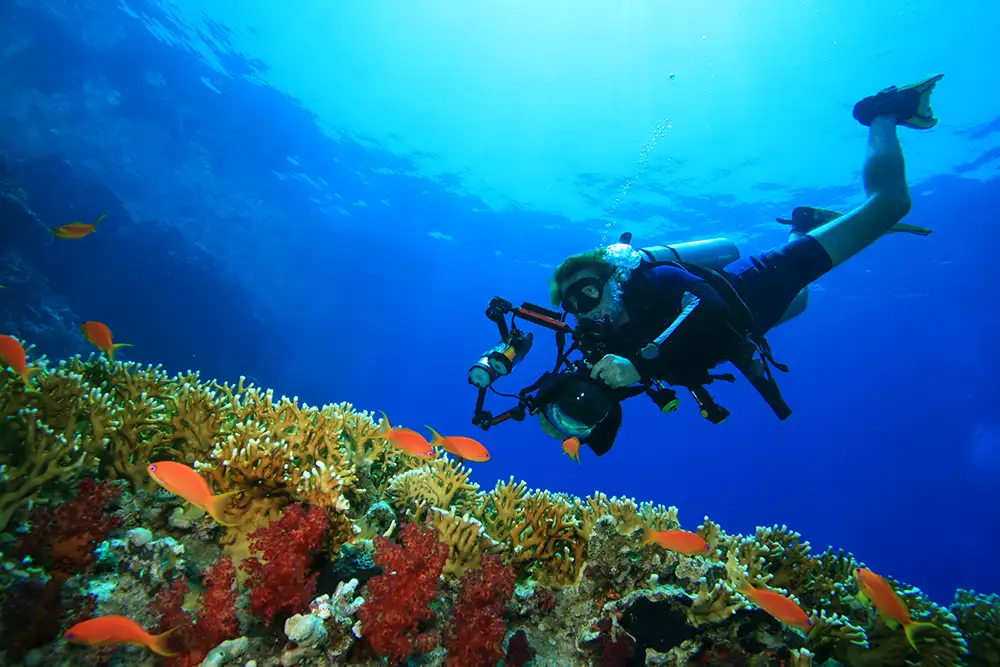
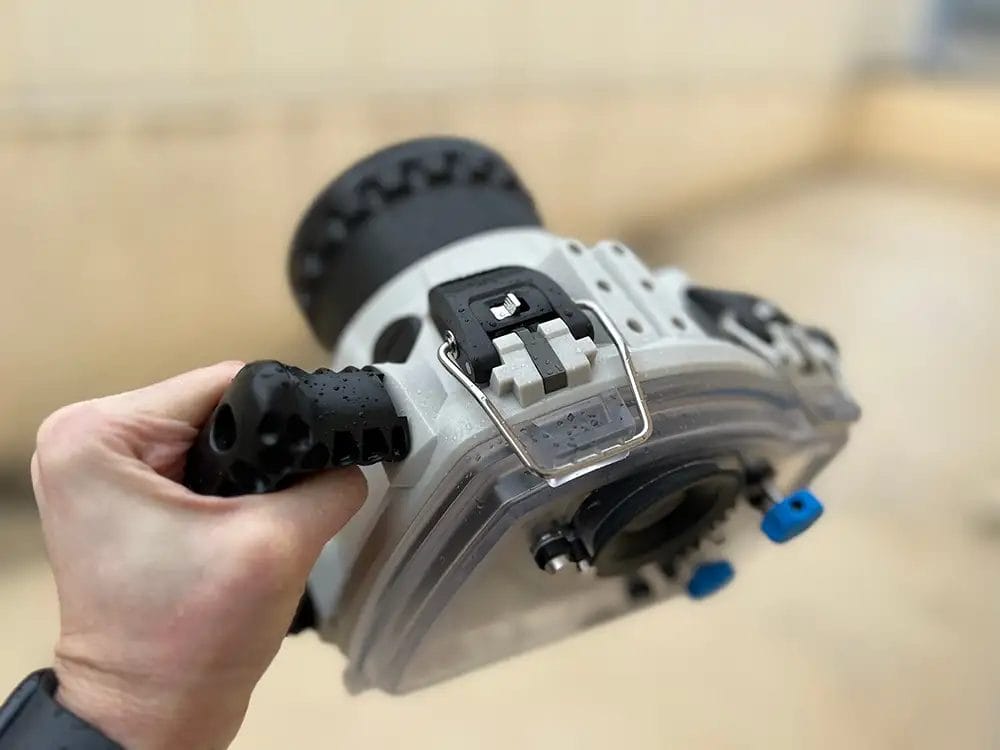
Light behaves differently underwater, affecting the colours and clarity of your photos. In this section, we’ll delve into techniques for managing light and enhancing colour.
Learn how to use underwater strobes and video lights effectively to illuminate your subjects and counteract the loss of colour in underwater photography.
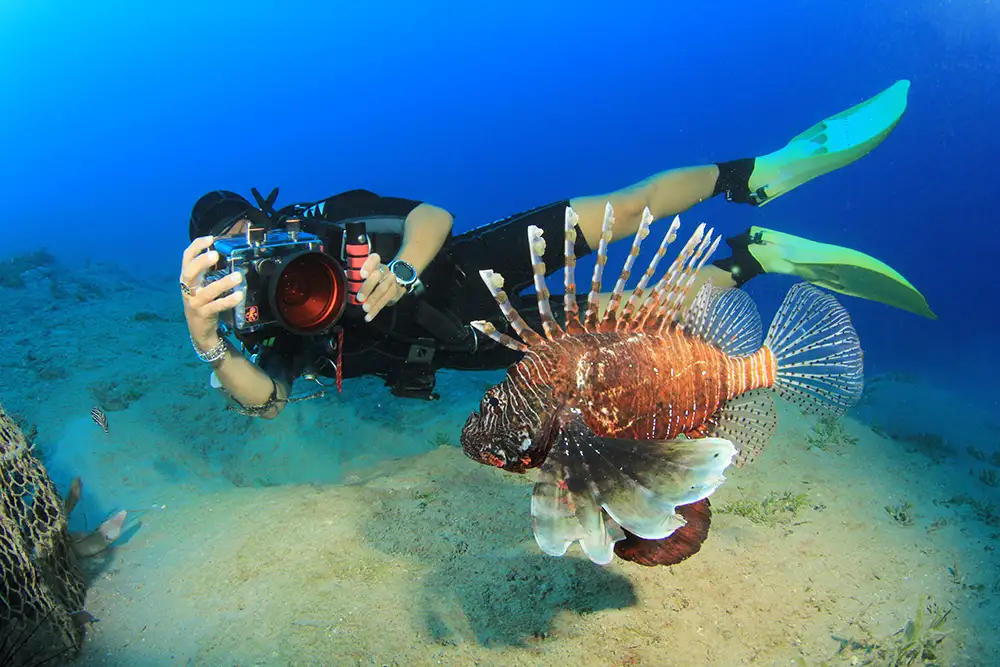
Colour correcting a photo taken underwater is crucial to bring out the natural and vibrant colours that may be lost due to water’s filtering effects on light. Underwater environments can introduce a blue or green colour cast to your images, making them appear washed out or monochromatic. Here’s a step-by-step guide on how to colour correct an underwater photo:
Whenever possible, shoot your underwater photos in RAW format. RAW files retain more image data, allowing for more extensive adjustments during the colour correction process compared to JPEGs.
Many underwater cameras offer specific white balance presets for underwater shooting. These presets are designed to counteract the colour shifts caused by water. Select the appropriate preset for your dive conditions, such as “Tropical Water” or “Blue Water,” if available.
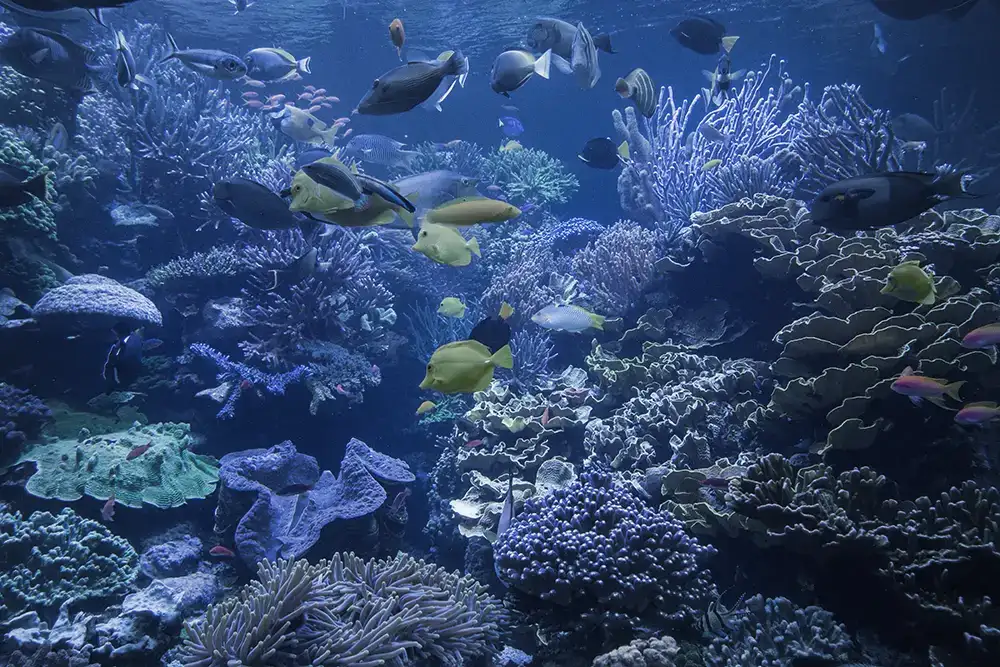
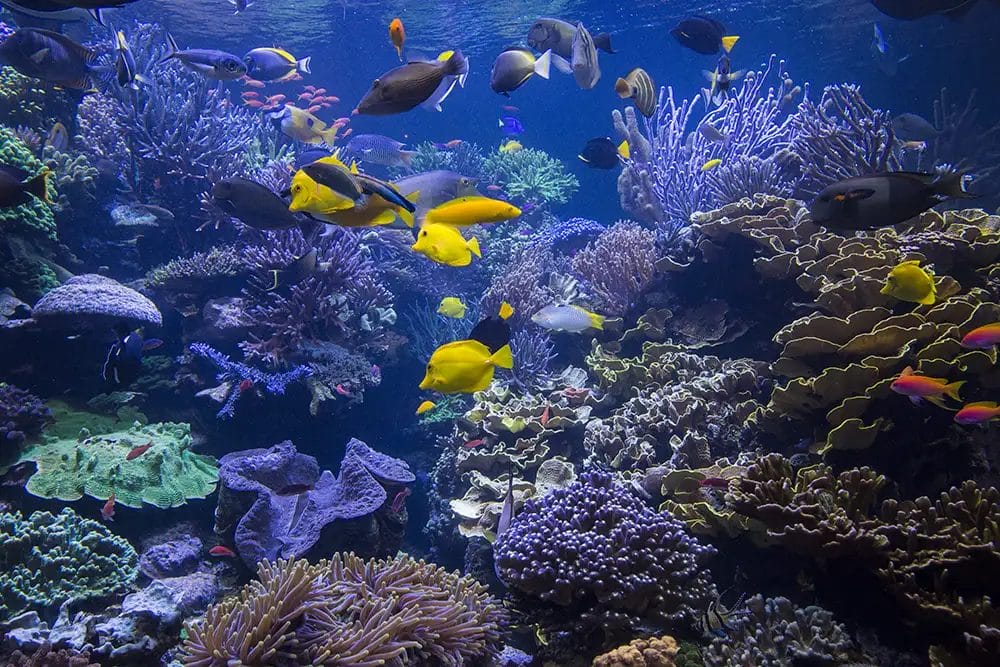
First, adjust the exposure to ensure that your photo is properly exposed. You can adjust the exposure using tools like exposure compensation in your camera or software like Adobe Lightroom.
Increase contrast and clarity to make your image pop. This will help to define the details and enhance the overall visual appeal.
Now, let’s focus on correcting the colour cast introduced by the underwater environment.
Use the white balance tool in your photo editing software to remove the predominant colour cast. Click on an area in the image that should be neutral in colour, such as a white or grey surface. The software will adjust the colour temperature and tint accordingly.
Fine-tune the colours using the hue and saturation controls. Increase the saturation of blues and greens to restore the underwater colours. Be careful not to oversaturate, as it can lead to unrealistic-looking images.
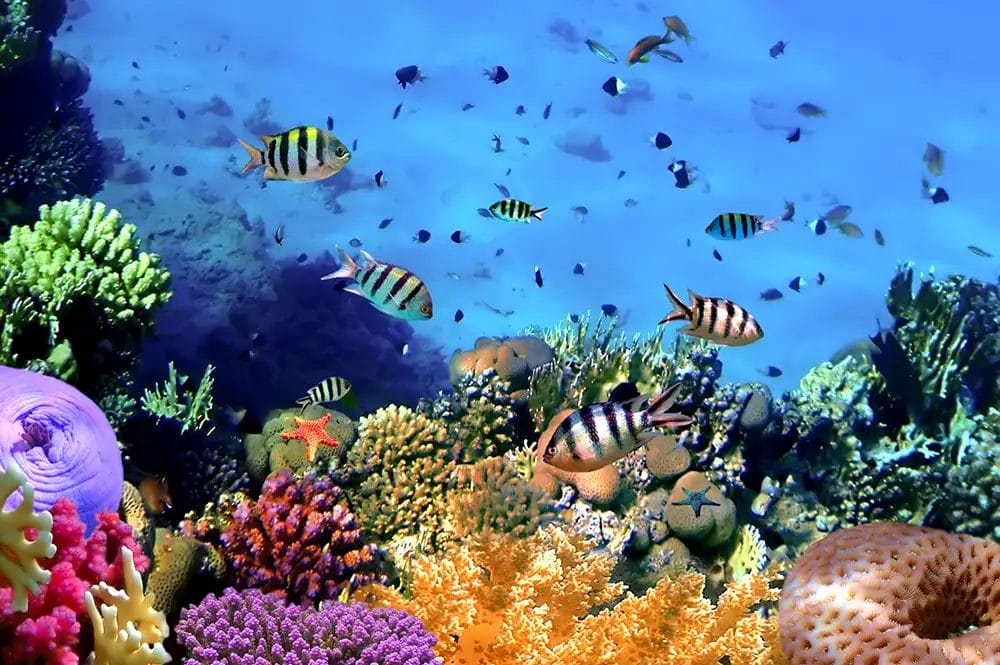
Underwater photos can suffer from backscatter (small particles or debris in the water) and distortion. To mitigate these issues:
Spot Healing or Clone Stamp: Use the spot healing brush or clone stamp tool to remove backscatter or other unwanted elements from the image carefully.
Lens Corrections: Apply lens corrections to reduce distortion and vignetting caused by the underwater housing. Many photo editing software programs have built-in lens profiles for popular underwater camera setups.
Once you’re satisfied with the colour correction and overall image adjustments, save your edited photo in the desired format (e.g., JPEG or TIFF). Be sure to keep the original RAW file intact for future editing if needed.
Remember that underwater photography may require some trial and error, as lighting conditions, water clarity, and depth can vary significantly. With practice and experimentation, you’ll develop a better understanding of how to effectively colour correct your underwater photos to bring out their full potential.
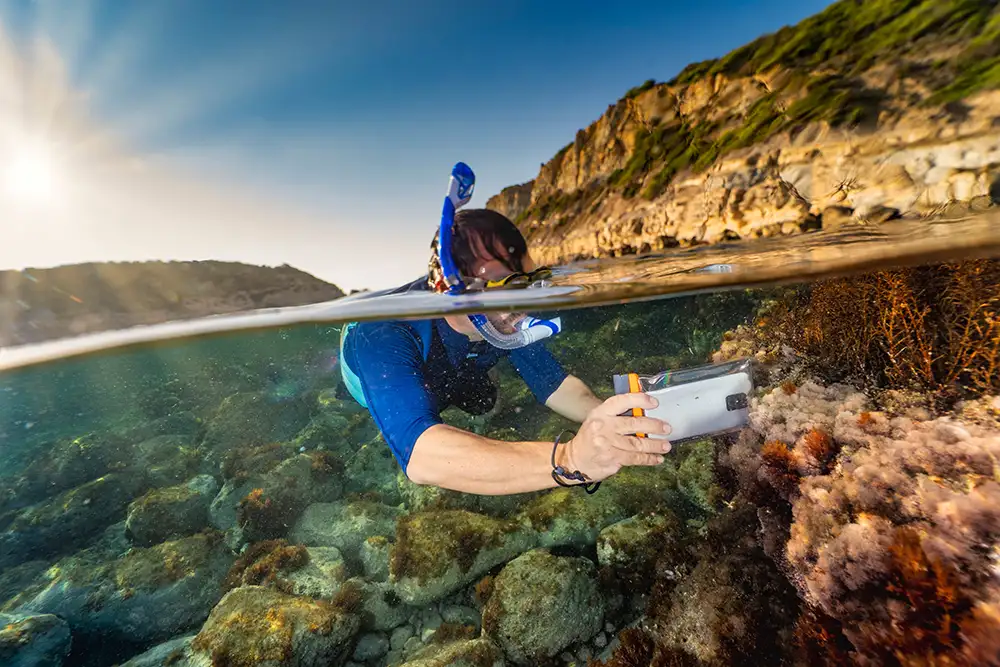
For those looking to take their underwater photography to the next level, we’ll explore advanced techniques and creative approaches.
Discover the challenges and rewards of photographing shipwrecks and underwater caves. We’ll discuss safety considerations and unique shooting opportunities.
Learn how to tell compelling stories through your underwater images by experimenting with composition, perspective, and subject placement.
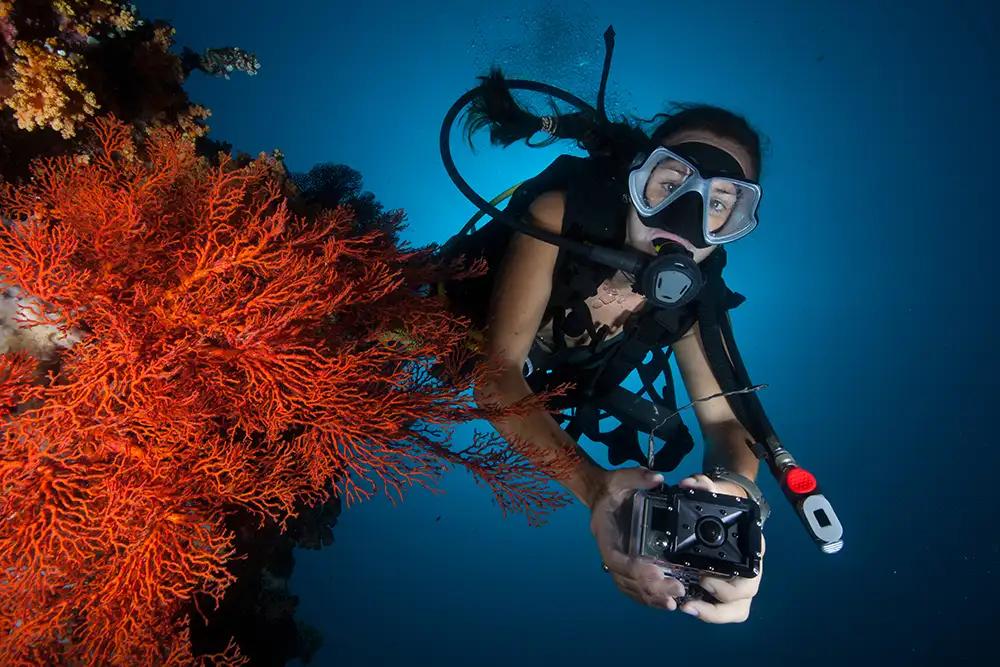
Before diving into our list of top underwater cameras, it’s essential to understand the key features and considerations when choosing the right camera for your underwater adventures.
One of the most critical aspects of an underwater camera is its ability to withstand water pressure and moisture. Some cameras come with built-in waterproofing, while others require housing to protect them underwater.
Image quality is paramount in underwater photography. Look for cameras with high-resolution sensors, excellent low-light performance, and the ability to capture vibrant colours in challenging underwater conditions.
Consider the lens options available for the camera, as well as compatibility with underwater lenses and filters. Versatility in lens choices can significantly impact the range of subjects you can photograph.
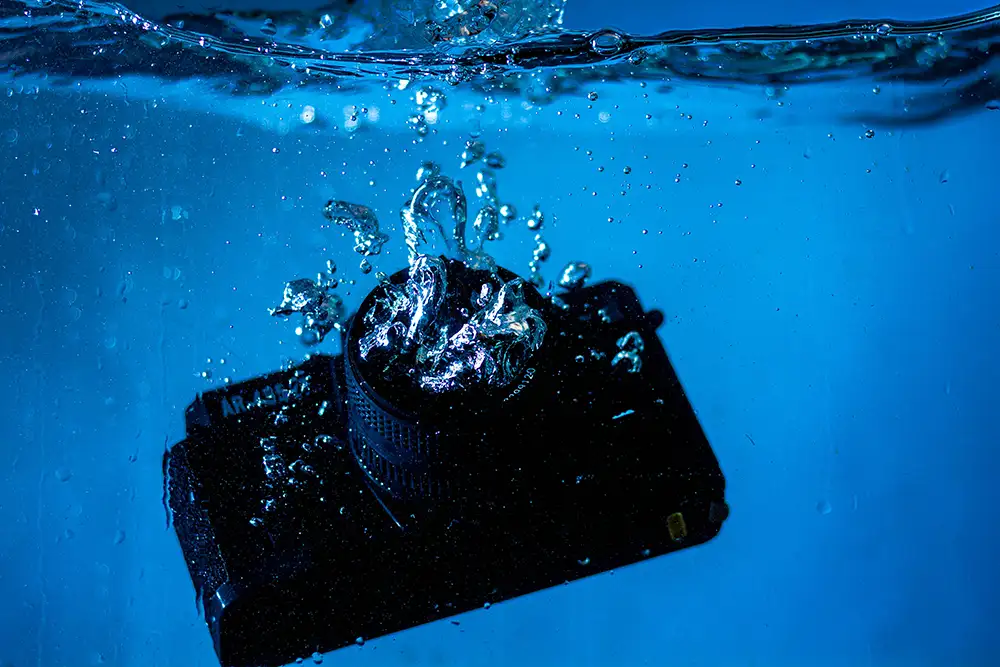
Now, let’s explore some of the best digital cameras that excel in underwater photography:
The Olympus Tough TG-6 is a rugged compact camera designed for adventure, and it’s one of the most popular choices for underwater photography. With its waterproof and shockproof design, it can handle depths of up to 50 feet without additional housing. The TG-6 boasts a 12-megapixel sensor, 4x optical zoom, and the ability to shoot in RAW, allowing for excellent image quality and versatility.
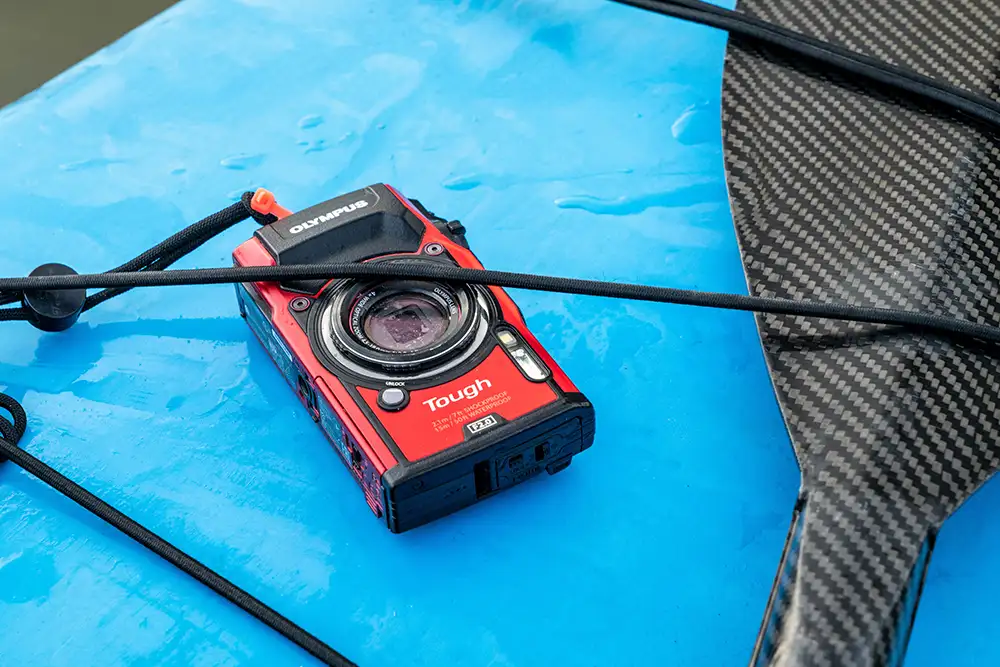
The Sony RX100 VII is a premium compact camera renowned for its exceptional image quality and performance. While it doesn’t have built-in waterproofing, it can be paired with underwater housing to dive to greater depths. With a 1-inch sensor, 20.1 megapixels, and advanced autofocus capabilities, it’s perfect for capturing stunning underwater scenes.

For those looking to step up their underwater photography game, the Nikon Z6 II is a mirrorless camera that offers full-frame image quality and versatility. When paired with appropriate underwater housing, the Z6 II can dive to impressive depths. Its 24.5-megapixel sensor, excellent low-light performance, and wide range of compatible lenses make it a top choice for professional underwater photographers.
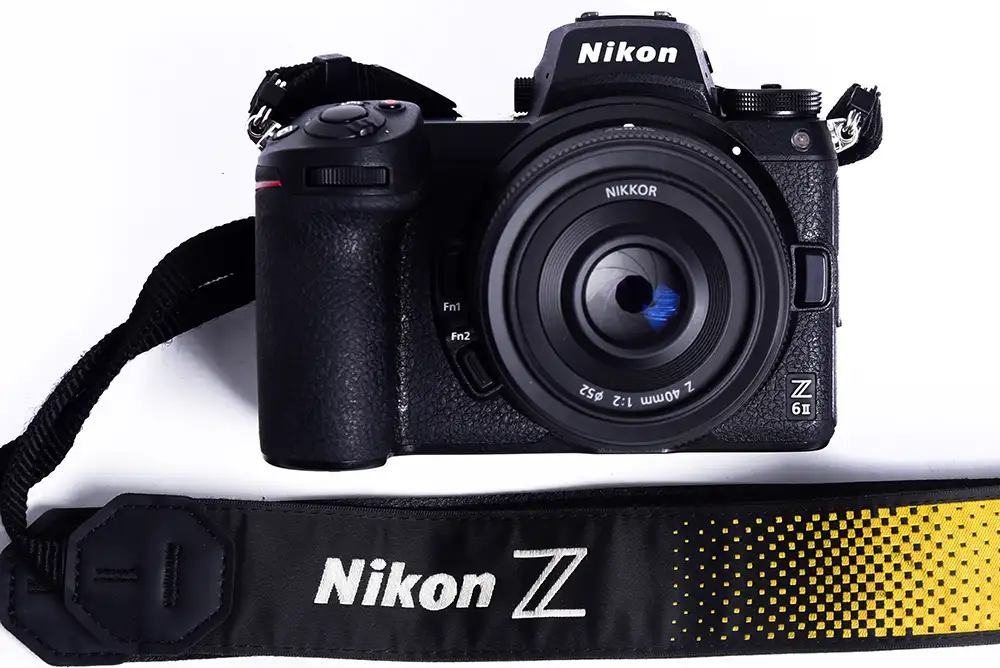
If you prefer a compact action camera for underwater adventures, the GoPro HERO10 Black is an excellent option. It’s designed for extreme conditions and can be submerged without housing. With 5.3K video recording, 23-megapixel photos, and advanced stabilisation, it’s perfect for capturing action-packed underwater moments.
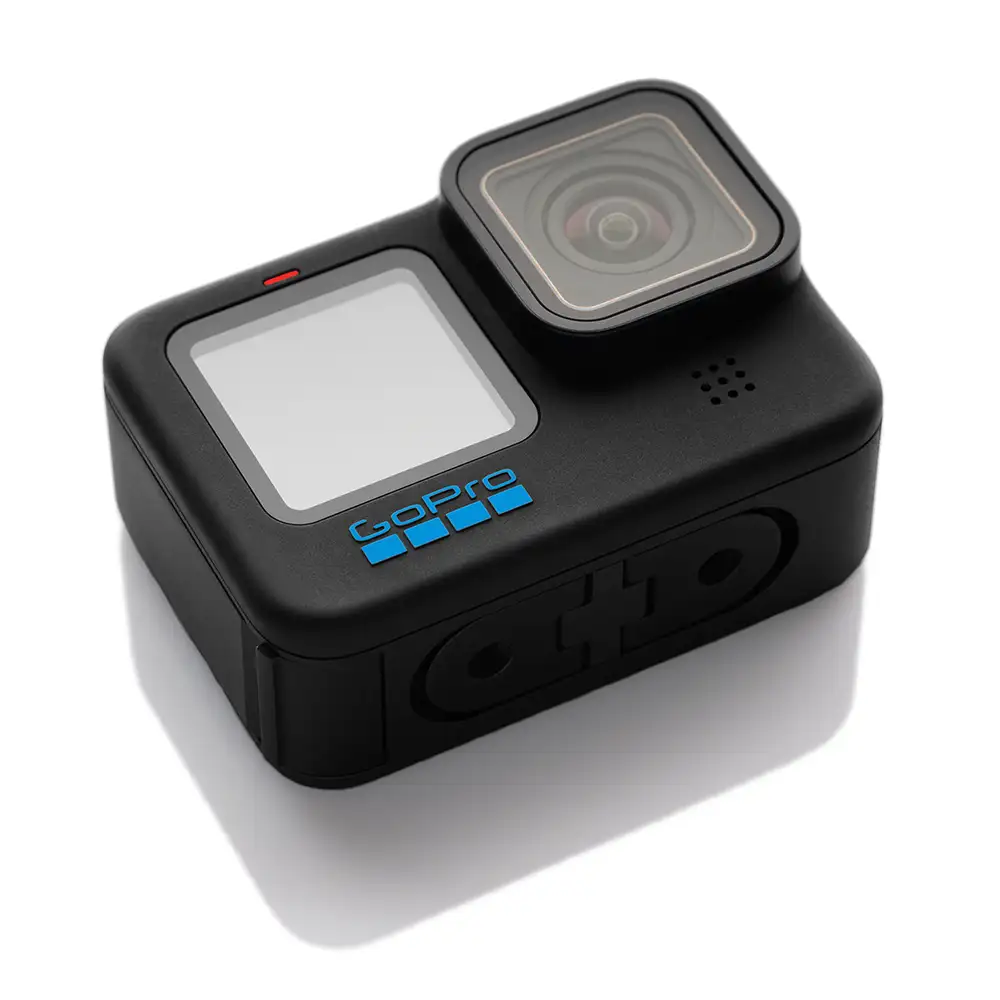
For serious underwater photographers seeking the best image quality and versatility, the Canon EOS 5D Mark IV is a top-tier choice. With a full-frame sensor, 30.4 megapixels, and a wide range of compatible lenses, it excels in capturing intricate details and vibrant colours underwater when paired with the right housing.
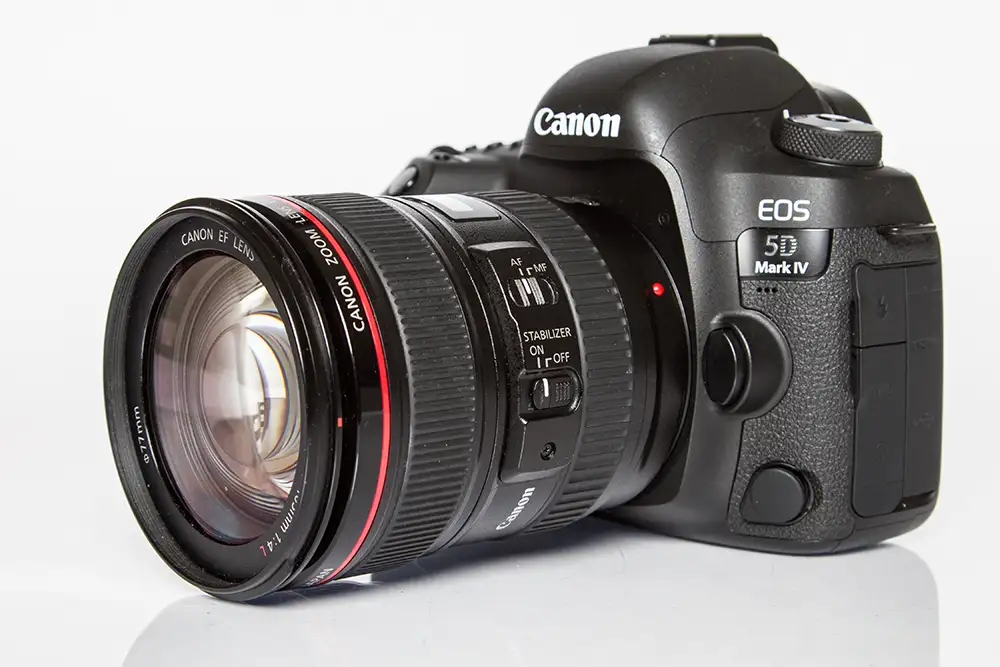
Choosing the best digital camera for underwater photography involves considering your specific needs, budget, and preferences. The cameras mentioned in this guide offer a range of options suitable for beginners, enthusiasts, and professionals alike.
Remember that underwater photography also requires proper training and safety measures, so make sure to hone your skills and respect the underwater environment while capturing awe-inspiring images beneath the waves.
(iPhotography may make small commissions from links in this article.)
Discover TOP features in the Lightroom CC mobile app with this guide for enhancing your photo editing skills. For desktop and tablet too.
Shooting sunsets using amazing 5-in-1 magnetic lens filters from Kentfaith, the 1st choice for photo & video products.
Popular memory cards for photography – what’s the best SD card for your digital camera? Choose the right capacity and class speed in our guide
Learn the basics of photography – fast – with our FREE 60-Second Photographer online course. Each class is short and sharp with simple, actionable steps that give you immediate results.
x 30 lessons

© iPhotography™
Become a confident and competent photographer in less than 30 minutes!
Before you leave, make sure you’ve secured your FREE online photography course (worth £29.99)
Each class is just 60-seconds or less making it the fastest and easiest way to learn photography!